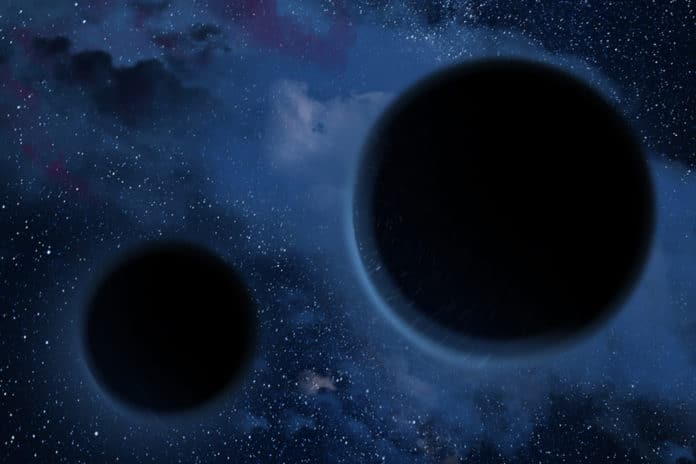On Sept. 9- 2018, All-Sky Automated Survey for Supernovae (ASASSN) detected a flash from a galaxy located 860 million light-years away. But, the source was a supermassive black hole that has a mass of 50 million times the mass of the sun.
Usually, this supermassive black hole seems quiet, but it awoke suddenly and swallowed a nearby passing star in a rare instance. This event is known as a tidal disruption event.
As the black hole absorbs the cosmic debris, it emits an enormous amount of energy in the form of light.
Recently, scientists from MIT, the European Southern Observatory, and elsewhere used several telescopes to observe this event. They labeled this event as AT2018fyk. Surprisingly, they found that as the supermassive black hole swallowed the star, it acts as much smaller, stellar-mass black holes.
It signifies that the way black holes evolve as they consume material is independent of their size.
Study author Dheeraj “DJ” Pasham, a research scientist in MIT’s Kavli Institute for Astrophysics and Space Research, said, “We’ve demonstrated that, if you’ve seen one black hole, you’ve seen them all, in a sense. When you throw a ball of gas at them, they all seem to do more or less the same thing. They’re the same beast in terms of their accretion.”
The black hole eventually settles back into a steady quiescence, and this entire accretion cycle can last a few weeks to months.
Until now, such an accretion cycle was discovered in multiple stellar-mass black holes for several decades. But for supermassive black holes, it was thought that this process would take too long to capture entirely.
Pasham said, “In a tidal disruption event, everything is abrupt. You have a sudden chunk of gas being thrown at you, and the black hole is suddenly woken up, and it’s like, ‘whoa, there’s so much food — let me just eat, eat, eat until it’s gone.’ So, it experiences everything in a short period. That allows us to probe all these different accretion stages that people have known in stellar-mass black holes.”
“We caught the black hole in the soft state with an accretion disk forming, and most of the emission in ultraviolet, with very few in the X-ray. Then the disk collapses, the corona gets stronger, and now it’s very bright in X-rays. Eventually, there’s not much gas to feed on, and the overall luminosity drops and goes back to undetectable levels.”
Scientists estimated that a star– about the size of our sun– was tidally disrupted by the black hole. This process generated an enormous accretion disk, about 12 billion kilometers wide, and emitted gas that they estimated to be about 40,000 Kelvin or more than 70,000 degrees Fahrenheit. With time, this disk became less bright and weak.
High-energy X-rays took over as the dominant phase around the black hole before eventually fading away.
Lead author Thomas Wevers, a fellow at the European Southern Observatory, said, “The most exciting prospect for the future is that such tidal disruption events provide a window into the formation of complex structures very close to the supermassive black hole such as the accretion disk and the corona. Studying how these structures form and interact in the extreme environment following the destruction of a star, we can hopefully start to understand better the fundamental physical laws that govern their existence.”
Journal Reference:
- Thomas Wevers et al. Rapid accretion state transitions following the tidal disruption event AT2018fyk. arXiv:2101.04692
